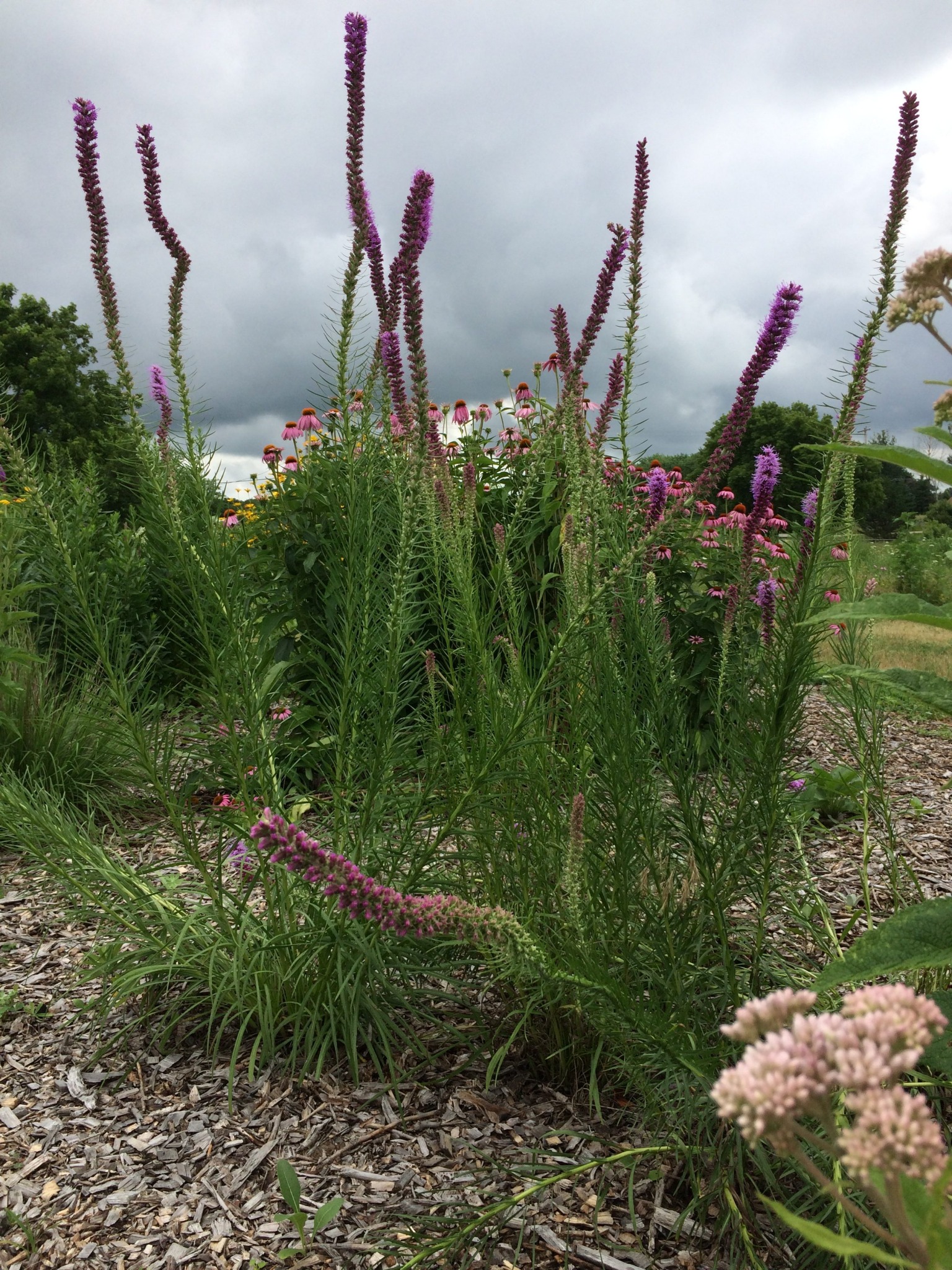Description
OUT OF STOCK
Tall, erect, purplish- pink spike in August-September
Tall, erect, purplish- pink spike in August-September
OUT OF STOCK
Tall, erect, purplish- pink spike in August-September
Umbels of arching stems with nodding bells of lilac shading to pink or occasionally white. May to June.
We are very sorry, but due to state agricultural restrictions, we are not permitted to ship Allium bulbs to Idaho, or to the following five counties in the State of Washington: Adams, Benton, Franklin, Grant and Klickitat.
Size: 12”-18”x 3-6”
Care: sun to part shade in moist well-drained soil
Native: Canada to Mexico
Wildlife Value: nectar source for Hairstreak butterfly, Attracts hummingbirds. Alliums resist critters including deer, rabbits, squirrels, mice, and moles and voles. They cannot stand the onion-like smell of Alliums protecting near-by plants too.
Cernuum is Latin meaning “nodding.” Many groups of 1st Americans ate the bulbs raw, roasted or dried for winter storage or as flavoring for soups and gravies. Cherokee used this plant medicinally to cure colds, hives, colic, “gravel & dropsy,” liver ailments, sore throats, “phthisic,” and feet in “nervous fever.” Those in the Isleta Pueblo were not quite as creative as the Cherokee and used this only for sore throats and infections. Meriwether Lewis collected this in Montana and wrote, “I met with great quantities of a small onion about the size of a musquit ball … They were crisp, white and well-flavoured. I gathered about a half a bushel of them before the crew arrivd.” Chicago is believed to be named for the Algonquin word for this plant chigagou.
Cool club-like maces at the ends of stems- June to October
Size: 30" x 24"
Care: Full sun to part shade in moist or moist well-drained soil
Native: Vermont west to Wisconsin, south to Georgia and Missouri
Awards: Great Plants for Great Plains
1st described in Vol VII of Transactions of Linnaean Society c. 1798. Botanists named and renamed it finally settling on Carex grayi to honor botanist Asa Gray (1810-1888).
The description in the Chiltern Seeds catalog cannot be improved: “This is the most elegant and refined of the North American prairie grasses …the finest texture composed of the thinnest of thin, thread-like, glossy green blades,.. in autumn turning deep orange before fading to a light copper for the winter. In late summer the plants bear, on very slender stalks high above the foliage, unbelievably delicate, graceful flower panicles, excellent for cutting. ”One of internationally known garden designer Piet Oudolf’s 100 “MUST HAVE” plants, Gardens Illustrated 94 (2013)
Size: 2’ x 2’
Care: Full sun in well-drained soil
Native: from Canada in the north to Texas in the south, Wisconsin native
Wildlife Value: seeds are food for birds
Awards: Missouri Botanic Garden Plant of Merit & Great Plants for Great Plains Grass of the Year.
Sporobolos is Greek from sporo meaning seed and ballein meaning to cast forth because the seed readily falls from the flower (or dropseed, the common name). Ojibwa “Medicine Society” used roots to cure sores & “remove bile.”
Towering creamy white flower spikes in May & June followed by dark seed pods.
Size: 3-5' x 2-3'
Care: full sun to part shade in rich well-drained soil.
Native: Wisconsin native – from Minnesota to Texas.
Wildlife Value: food source for several caterpillars and nectar and pollen for a number of butterflies and bees. Deer resistant.
Winnebago (HoChunk) mashed cooked root to make a poultice applied to remedy inflammation of the womb. Baptisia is Greek meaning to dye referring to use of Baptisia australis as a substitute for indigo dye. Leucantha means white flowered.

